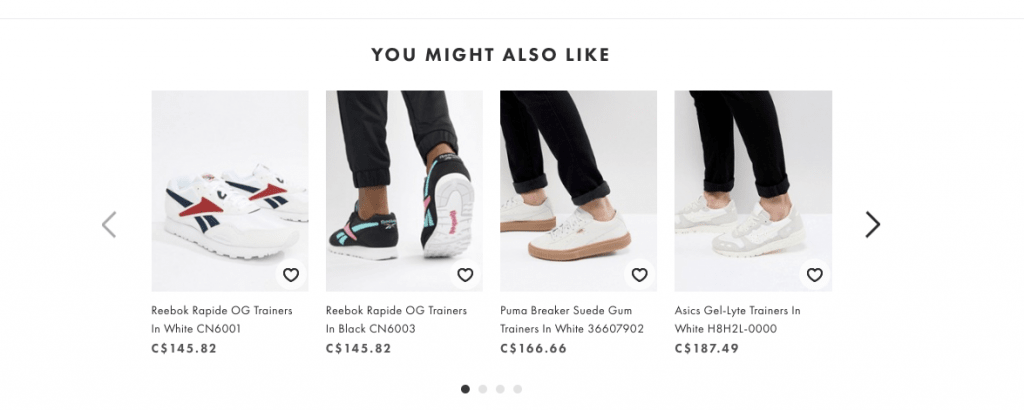Conversion rate optimization can be tough to tackle, especially if your e-commerce department is still optimizing everything manually. In a data-driven world, you already know that capturing contextual and behavioral data is critical. Nonetheless, analyzing and extracting insights from all that data can feel like an impossible task.
Fortunately, recent developments in artificial intelligence have lifted the burden of investing hundreds of hours combing through numbers. Machine learning capabilities have made it possible to take your website’s raw visitor data and make informed predictions about customer preferences and intent to increase conversion and drive positive business outcomes.
In this post, we’ll go over the ways in which AI-powered search is improving eCommerce conversion rates for some of today’s key players, as well as some best practices that you can implement within your organization to deliver a personalized, customer-first experience and drive significant business results.
1. AI-Powered Site Search
If your site search has been an afterthought until now, it’s time to course correct. Your entire customer experience, and ultimately your ability to convert your customers, depends on their ability to find what they’re looking for. Your customers expect you to deliver an experience that’s on par or better than every other digital encounter they have each day.
Research has shown that a contextually relevant site search experience can increase conversions by up to 216%. Furthermore, when customers can find what they need quickly and intuitively, they also tend to buy 21% more products on average. AI capabilities make personalized marketing possible and it’s certainly yielding ROI for early adopters.
What does an optimized site search experience look like?

Pet Supplies Plus did a great job implementing intelligent site search in order to deliver relevant results to their customers. Its AI-powered search solution uses machine learning to provide customers with relevant query suggestions and popular search results. By looking at any number of different parameters — the visitor’s location, the time of day, their previous searches and purchases — AI has transformed its search experience, and ultimately the customer experience, delivering custom recommendations for each and every person as they type in the search box. This is called mass personalization: and it is only possible because machine learning algorithms are so effective at working at scale, turning one-to-one experience into a one-to-many experience.
After your customer completes their search, they expect a dynamic results page with personalized and relevant product results that they want to buy. With an optimized search experience, backed by the effectiveness of AI, you will find that not only will your customers be more likely to follow through with their original purchases because they’re finding what they need that much faster, they will actually be inclined to purchase more.
2. Intelligent Product Recommendations
According to a Barilliance study, over 31% of eCommerce revenue was generated using personalized product recommendations. Consumers have repeatedly indicated that they want relevance. In fact, 53% of respondents from another study reported that they find that eCommerce websites that personalize are doing them a valuable service.
Machine learning, in particular, is the backbone of personalized product recommendation. In general, AI systems work by always testing between two (or more) possible variants: given two visitors with similar profiles, for example, an AI algorithm will try to measure which product would be more interesting to both of them. If the algorithm sees that people tend to convert more for product A than for product B given a certain profile, it will start recommending the more successful option — boosting conversions in the process.
ASOS features a smart product recommendation system on its website: this algorithm builds suggestions based on other customers’ previous purchases as well as on color and object matches from similar products.

This is just one way that AI learns and improves — all by itself. For that reason, improving product recommendations with machine learning is a surefire way to improve conversion rates.
Amazon, whose product recommendations are powered by artificial intelligence, has been reaping these benefits for years: the company’s personalized and dynamic product recommendations drive 35% of its $178 billion revenue. If you’re interested in hearing more about pre-built AI solutions that deliver excellent product recommendations, check out our pre-built solution.
3. Dynamic Headlines and Product Pages
The same way that AI can personalize customer search and product recommendations, predictive algorithms can learn which product headlines and product page designs work best for customer conversion. Machine learning does this through continuous A/B Testing: the algorithm puts different headline variations, text sizes, and button styles side-by-side to see which ones yield higher returns.
Website design is vital to the success of your ecommerce platform. Take the guesswork out of what works and what doesn’t: an AI-powered website customization platform can help you leverage rigorous, automated, and reliable experimentation to personalize at scale.

On-site search is a natural extension of good eCommerce website personalization. Whether it’s recommending your seasonal products at the right time or providing a fitness-focused set of recommendation to customers looking for the latest accessories, AI-powered website customization gives your customers what they came looking for. Accepting the fact that consumers now want personalized experiences means delivering your products through custom interfaces that connect the right products and services to the right people, at the right time.
If you’re interested in reading more about the ways in which site search can help build out a variety of eCommerce benefits, check out our eBook:

